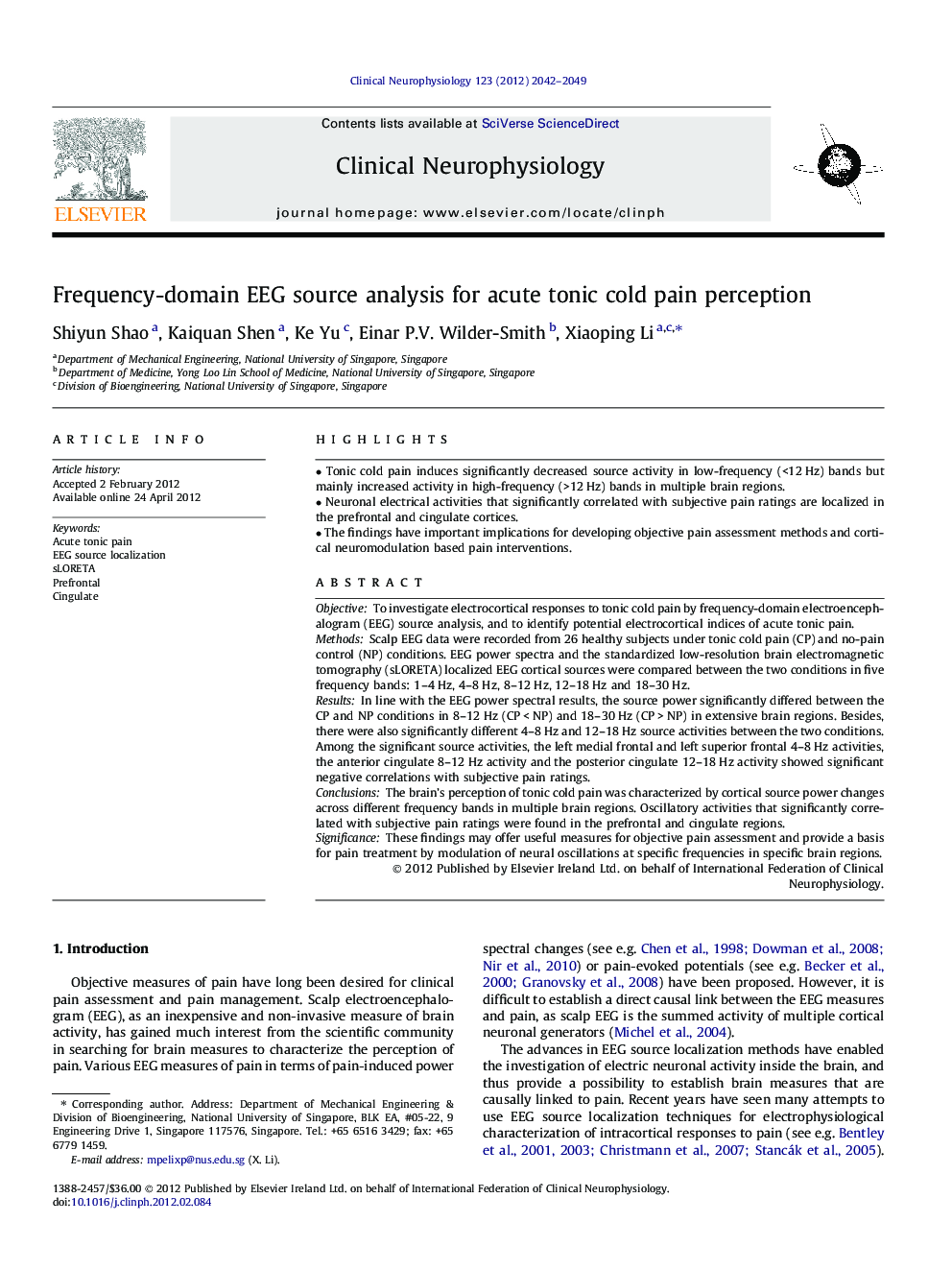| Article ID | Journal | Published Year | Pages | File Type |
|---|---|---|---|---|
| 3045388 | Clinical Neurophysiology | 2012 | 8 Pages |
ObjectiveTo investigate electrocortical responses to tonic cold pain by frequency-domain electroencephalogram (EEG) source analysis, and to identify potential electrocortical indices of acute tonic pain.MethodsScalp EEG data were recorded from 26 healthy subjects under tonic cold pain (CP) and no-pain control (NP) conditions. EEG power spectra and the standardized low-resolution brain electromagnetic tomography (sLORETA) localized EEG cortical sources were compared between the two conditions in five frequency bands: 1–4 Hz, 4–8 Hz, 8–12 Hz, 12–18 Hz and 18–30 Hz.ResultsIn line with the EEG power spectral results, the source power significantly differed between the CP and NP conditions in 8–12 Hz (CP < NP) and 18–30 Hz (CP > NP) in extensive brain regions. Besides, there were also significantly different 4–8 Hz and 12–18 Hz source activities between the two conditions. Among the significant source activities, the left medial frontal and left superior frontal 4–8 Hz activities, the anterior cingulate 8–12 Hz activity and the posterior cingulate 12–18 Hz activity showed significant negative correlations with subjective pain ratings.ConclusionsThe brain’s perception of tonic cold pain was characterized by cortical source power changes across different frequency bands in multiple brain regions. Oscillatory activities that significantly correlated with subjective pain ratings were found in the prefrontal and cingulate regions.SignificanceThese findings may offer useful measures for objective pain assessment and provide a basis for pain treatment by modulation of neural oscillations at specific frequencies in specific brain regions.
► Tonic cold pain induces significantly decreased source activity in low-frequency (<12 Hz) bands but mainly increased activity in high-frequency (>12 Hz) bands in multiple brain regions. ► Neuronal electrical activities that significantly correlated with subjective pain ratings are localized in the prefrontal and cingulate cortices. ► The findings have important implications for developing objective pain assessment methods and cortical neuromodulation based pain interventions.
